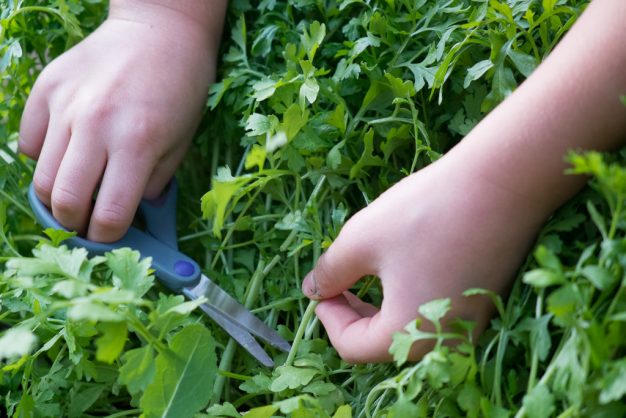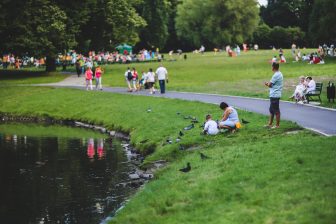
Building the asthma-friendly school garden
For the many children who have asthma, the typical schoolyard is not a friendly place. Most school gardens have pollen-producing male clonal shrubs, trees and many other plants that can provoke asthma attacks. Here, Peter Prakke describes the simple steps to allow these children to enjoy their natural environments and take part in gardening without being at such risk.
Asthma sufferers will tell you that their condition can be activated by many allergens, sometimes called ‘triggers’. Pollen is the number one trigger for such an attack. Outdoor allergies are common, but they need not be. If we make some simple changes in our environmental work area, the allergies caused by gardening can be greatly reduced.
Steps to building the asthma friendly school garden.
Plant lots of female, plants, shrubs and trees. These will not shed any pollen, but trap a good deal for pollen for pollination and clean the air. Think about these female plants as ‘nature’s air cleaners’.
- Using the OPALS™ scale. OPALS™ – Ogren Plant Allergy Scale. The allergy ranking of plants is 1 = low allergen and asthma friendly and 10 = high allergenic (worst).
- If possible, remove any shrub or tree with a ranking over OPALS™ # 4. Above this number are sure asthma triggers.
- Use only plants that are well adapted to your own area or zone from 3-8. If you can find native plants with low allergy rankings, consider using them. Look around in your area which plants are flourishing there already.
- Use a wide variety of plants if possible. Biodiversity always makes sense. The more diverse schoolyard, the fewer problems you will have with insects and molds.
- Avoid plants or vines with strong fragrances or odors, because they can trigger asthma.
- When using garden mulch, only very lightly, because toxic mold spores.
“One, who gardens, honors their ancestors”
- To eliminate mold spores in the school garden, encourage birds. Hummingbirds actually eat a large number of insects. Put up hummingbird and suet feeders which attract insect eating birds.
- Keep your ‘drought tolerant’ annuals / perennials healthy. Water according to the climatic conditions and use ‘organic’ fertilizer.
- Build a ‘pollinator garden’. Diverse, continually flowering ‘allergy friendly’ plants attract many pollinators such as, birds, bees, etc. Check which native perennials, shrubs or trees ‘fit’ your schoolyard.
- If possible, have a ‘raised bed garden’ to grow herbs, vegetables or flowers. This accommodates people on ‘crutches’ or made wheelchair accessible.
- Make your school garden a fun and stress-free zone. A pollen free / allergy-friendly garden is the best place for healthy children to enjoy the great outdoors.
Peter Prakke
Photo: michammel




Marvelous article! All schools need allergy-friendly landscapes. Asthma is the most common childhood disease, and we should never plant allergenic trees, shrubs at schools. Allergy not only makes children feel miserable, it also is distracting, making learning more difficult. Allergies lower school test score.
I would add too, that climate change is resulting in longer bloom periods and more pollen….which is all the more reason to practice allergy-free gardening.
See: http://www.safegardening.org
What a great article! We need to make it a priority to treat our children better by planting allergy friendly landscapes.